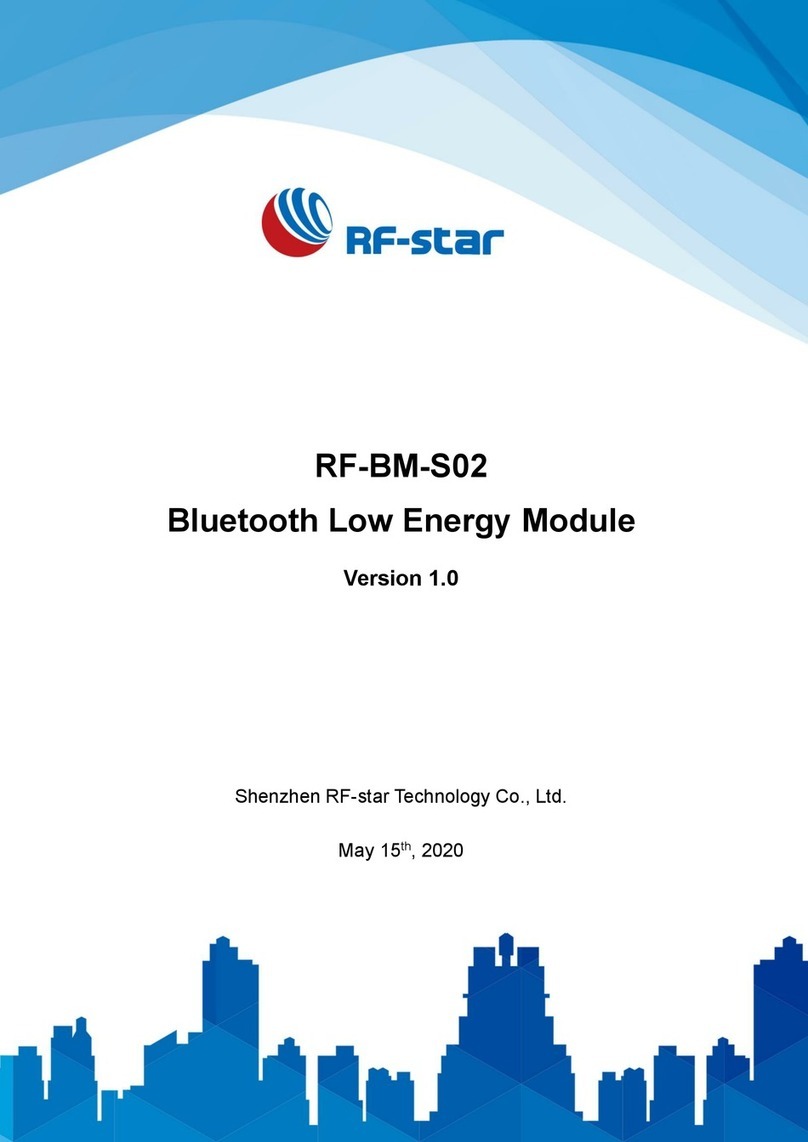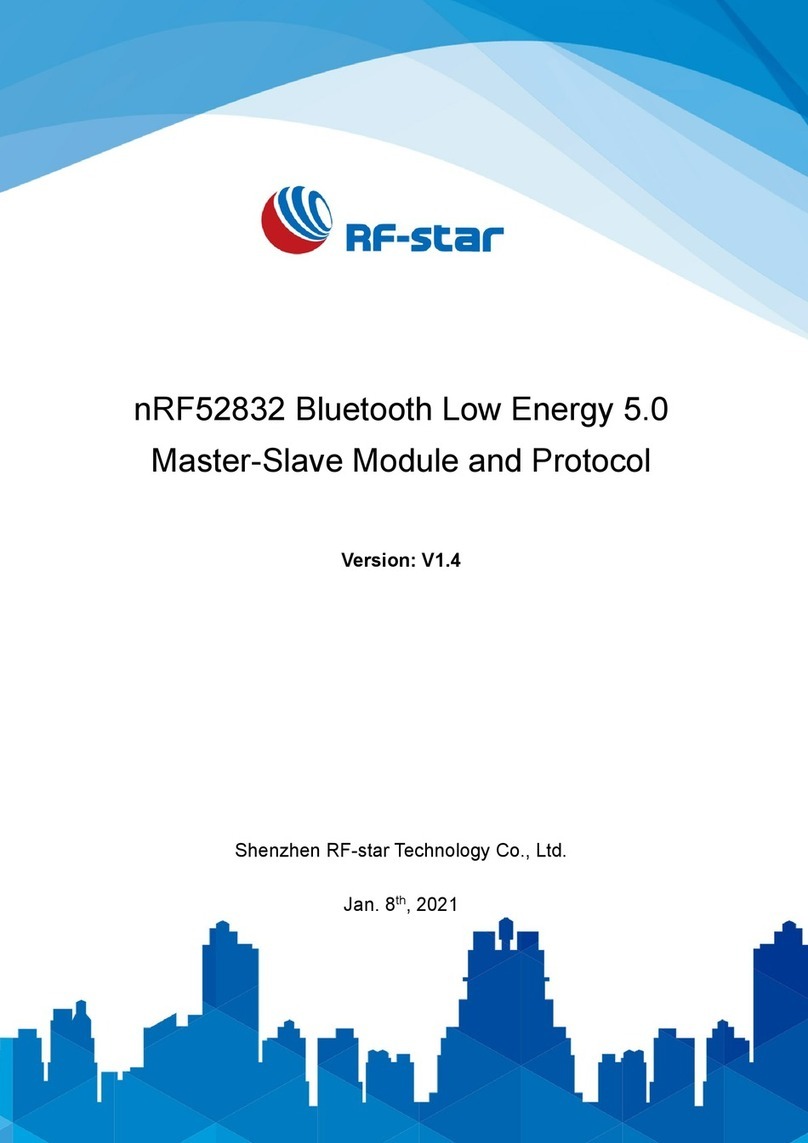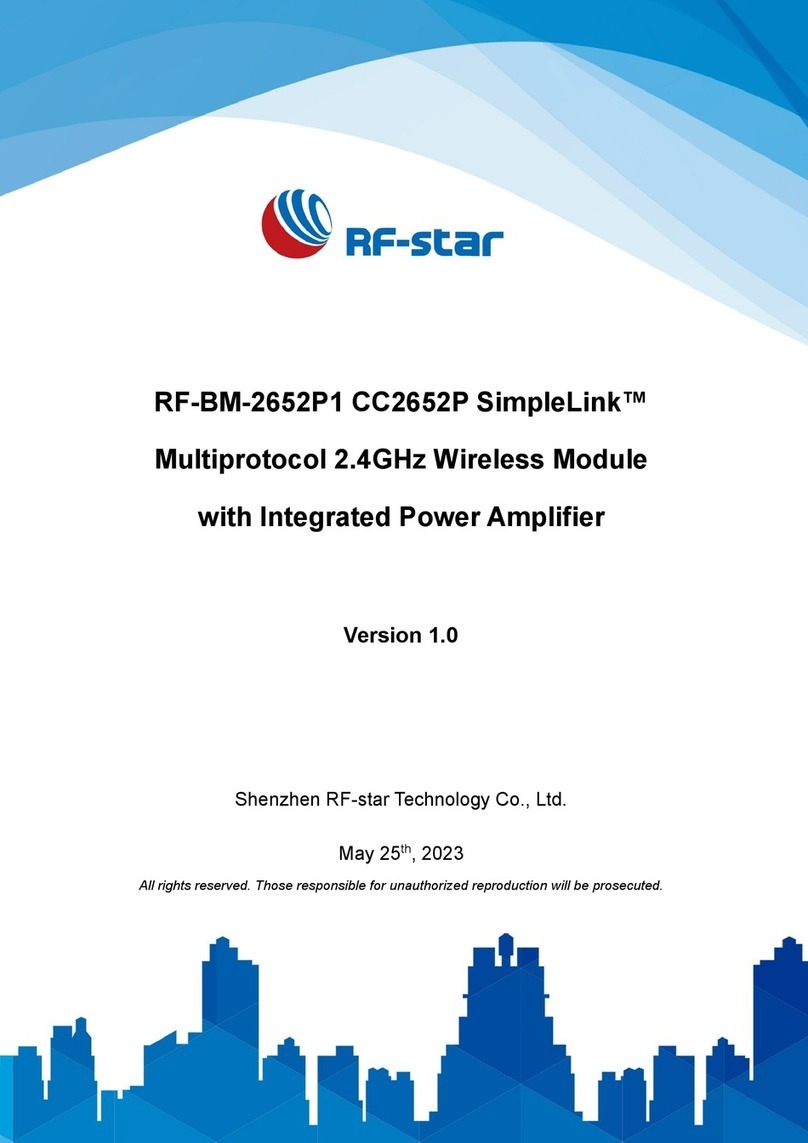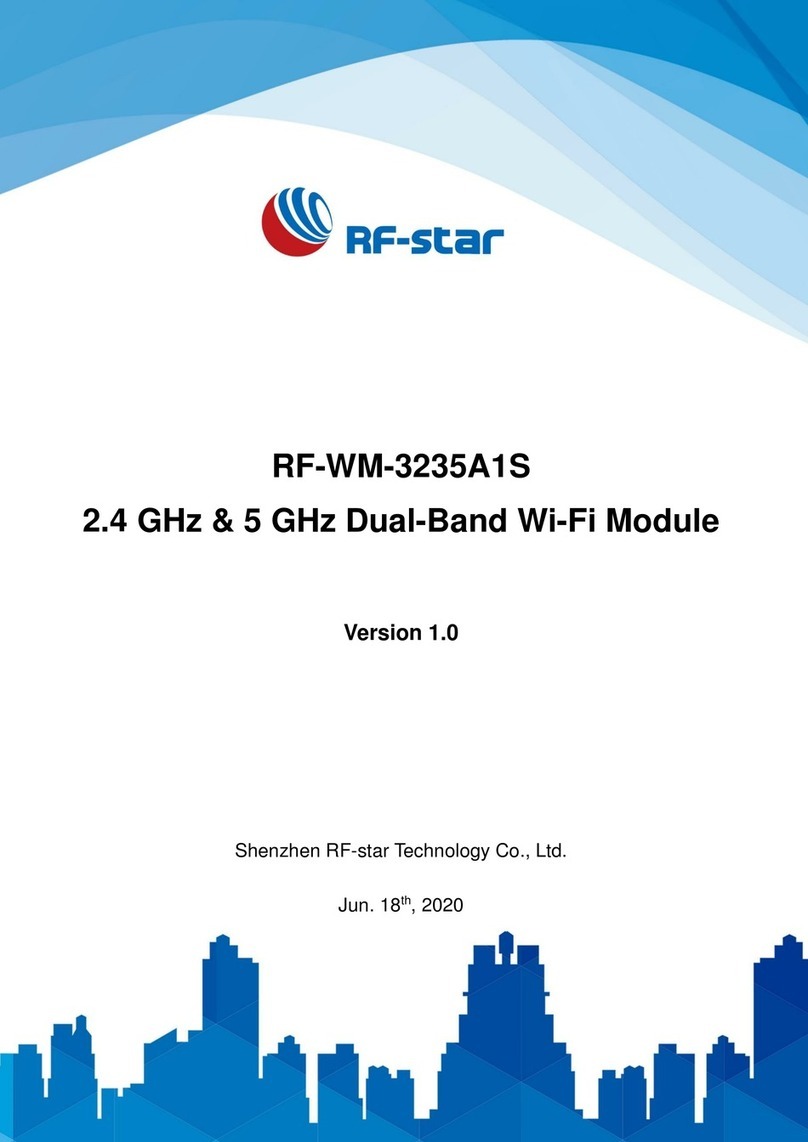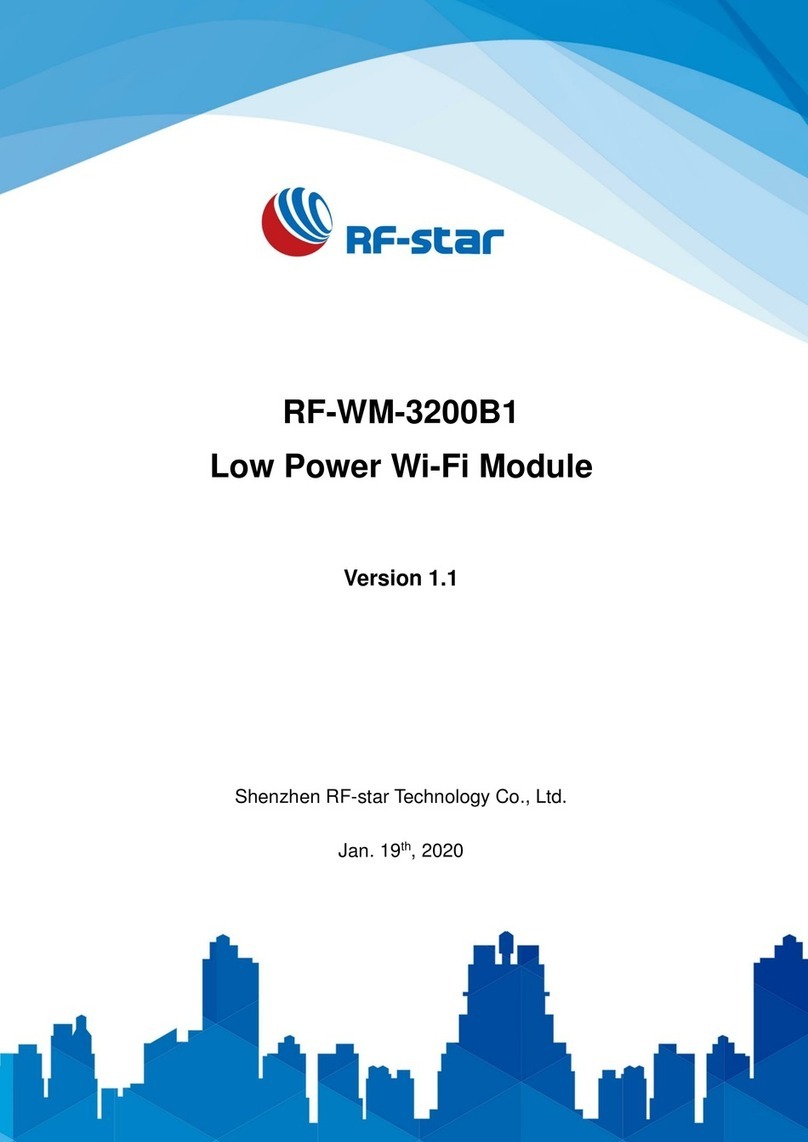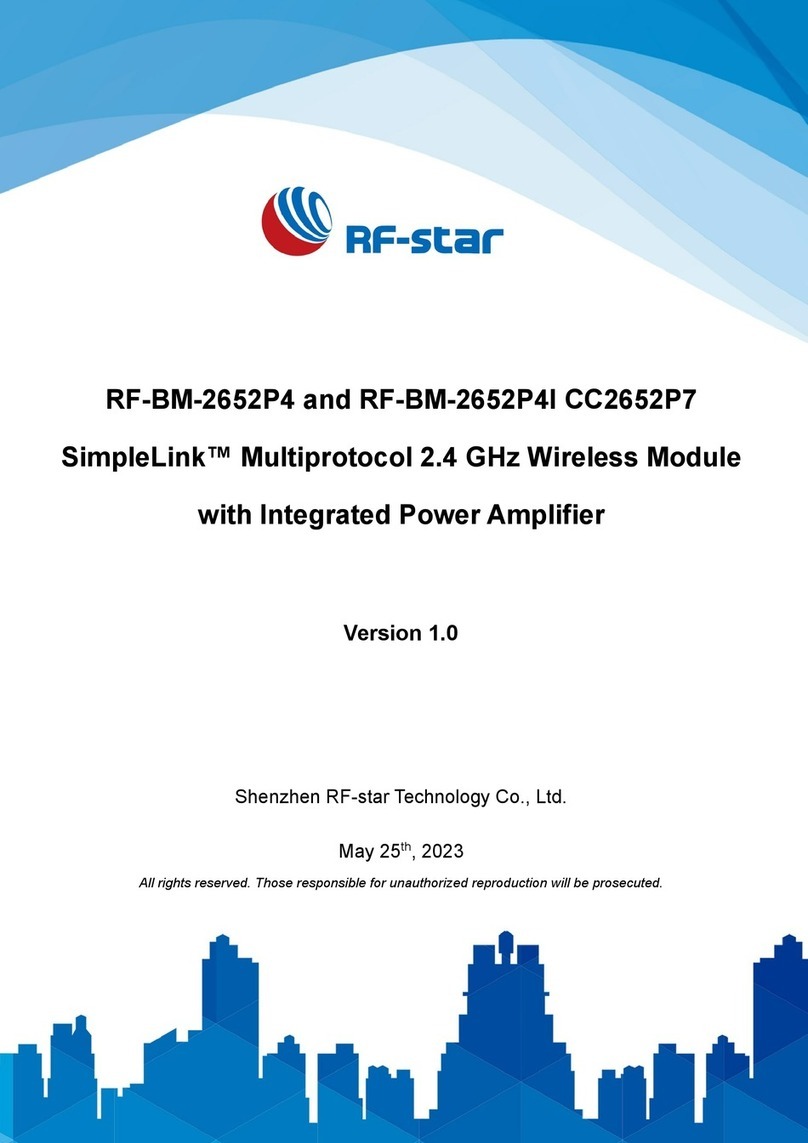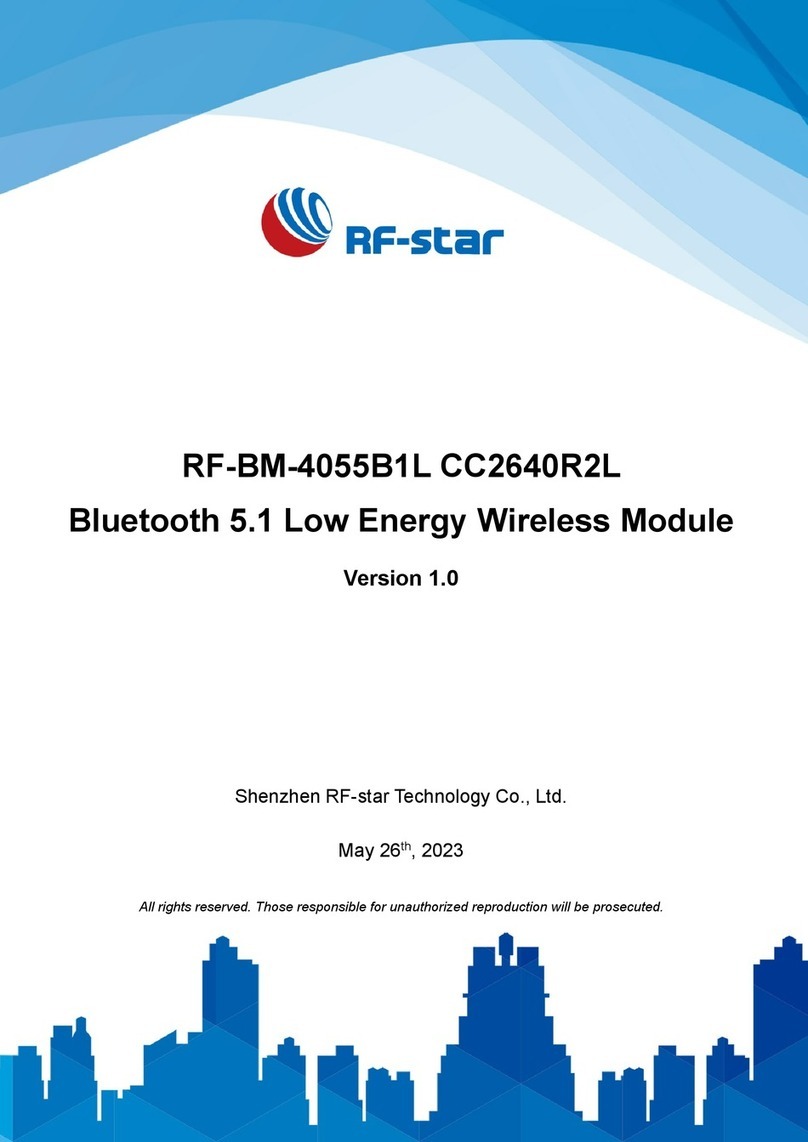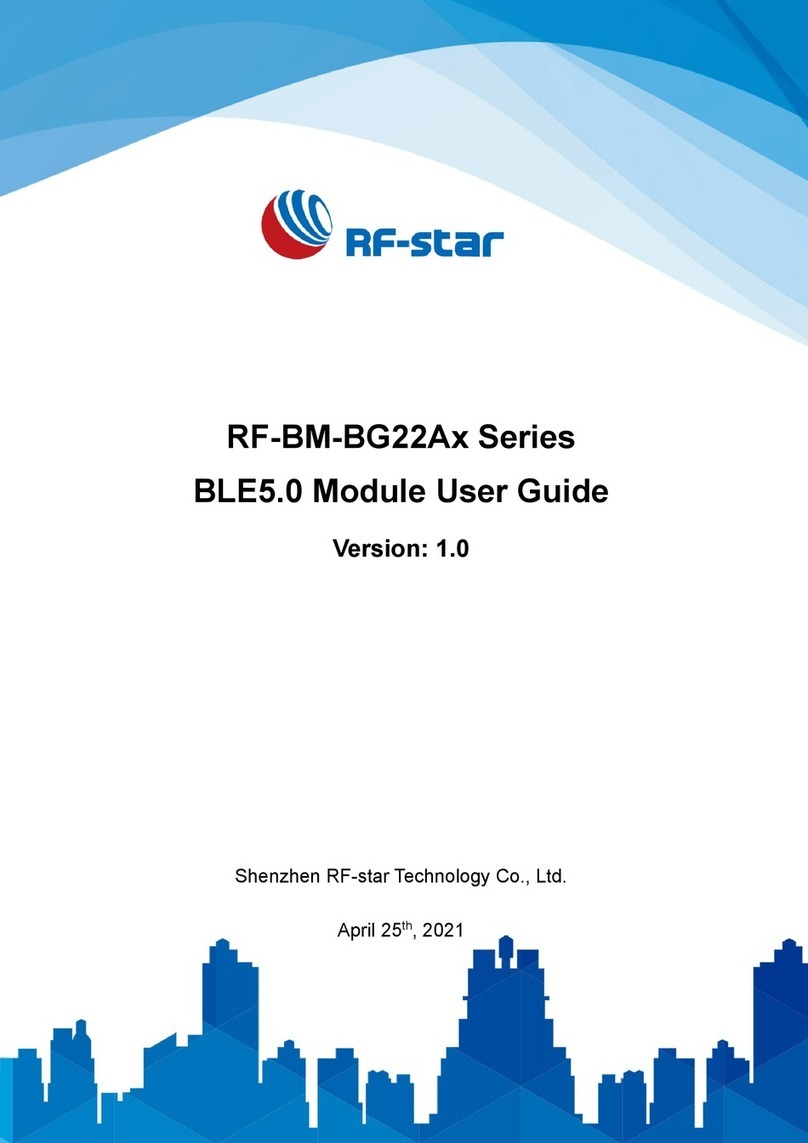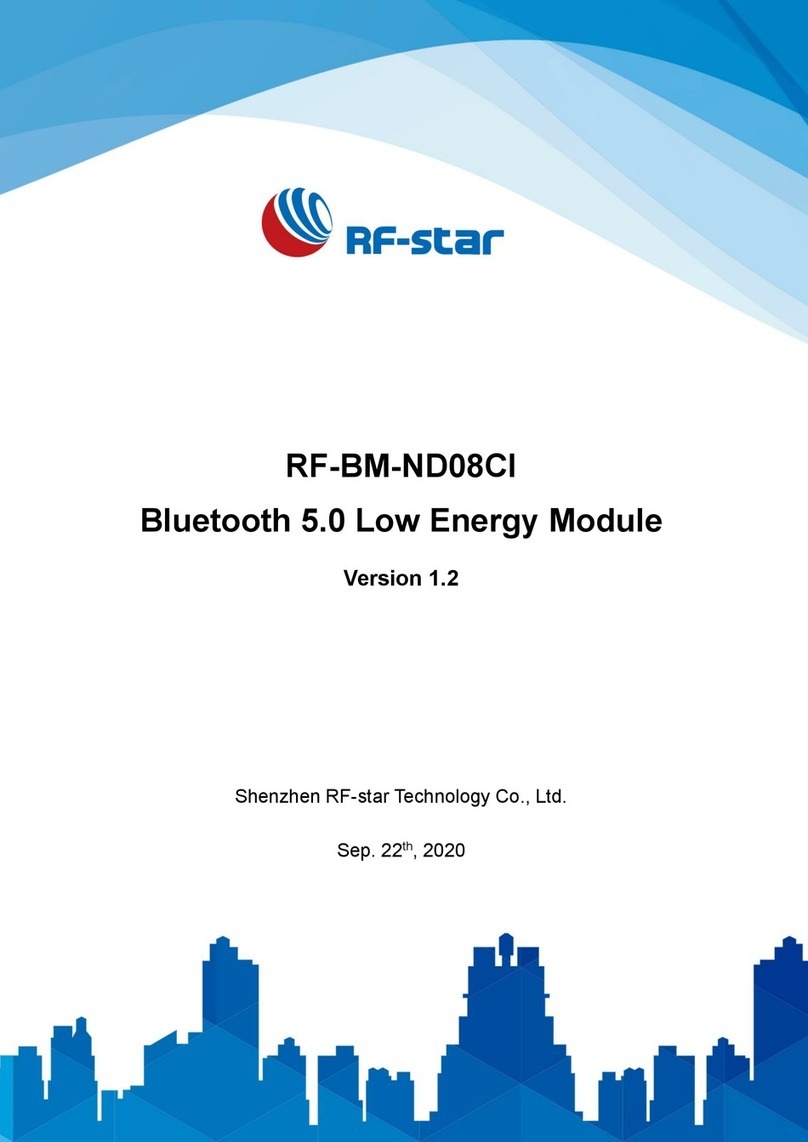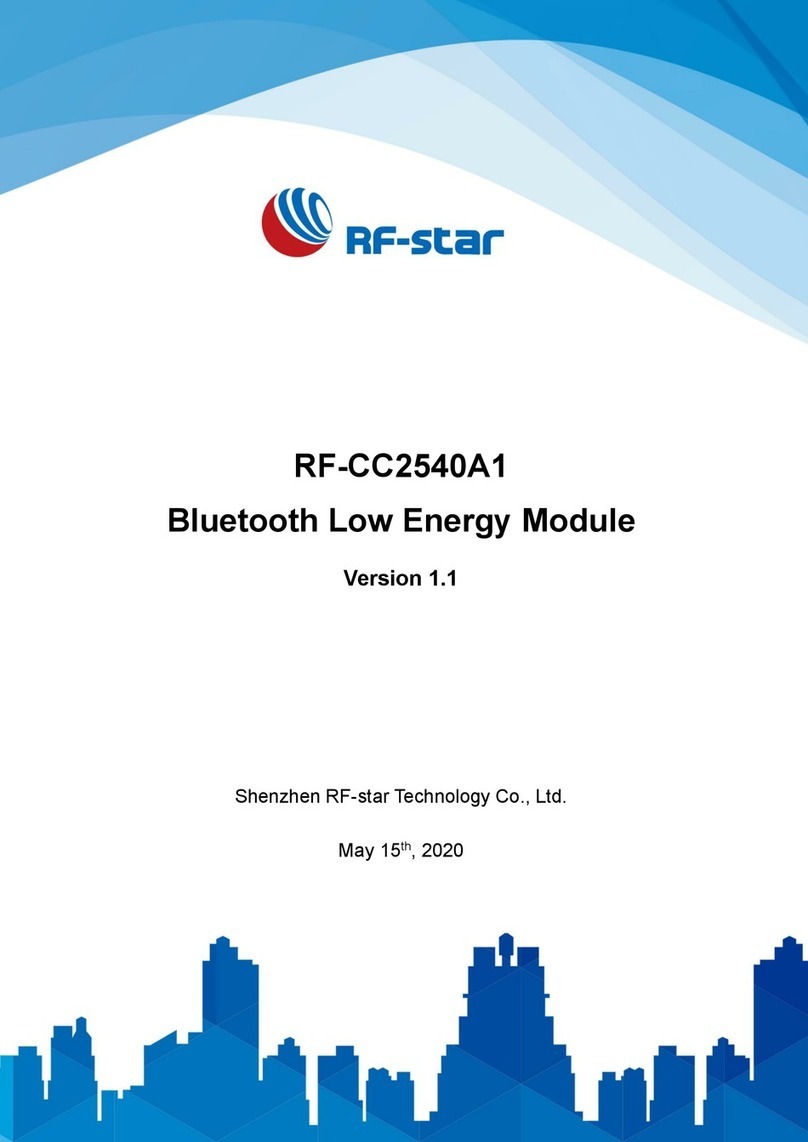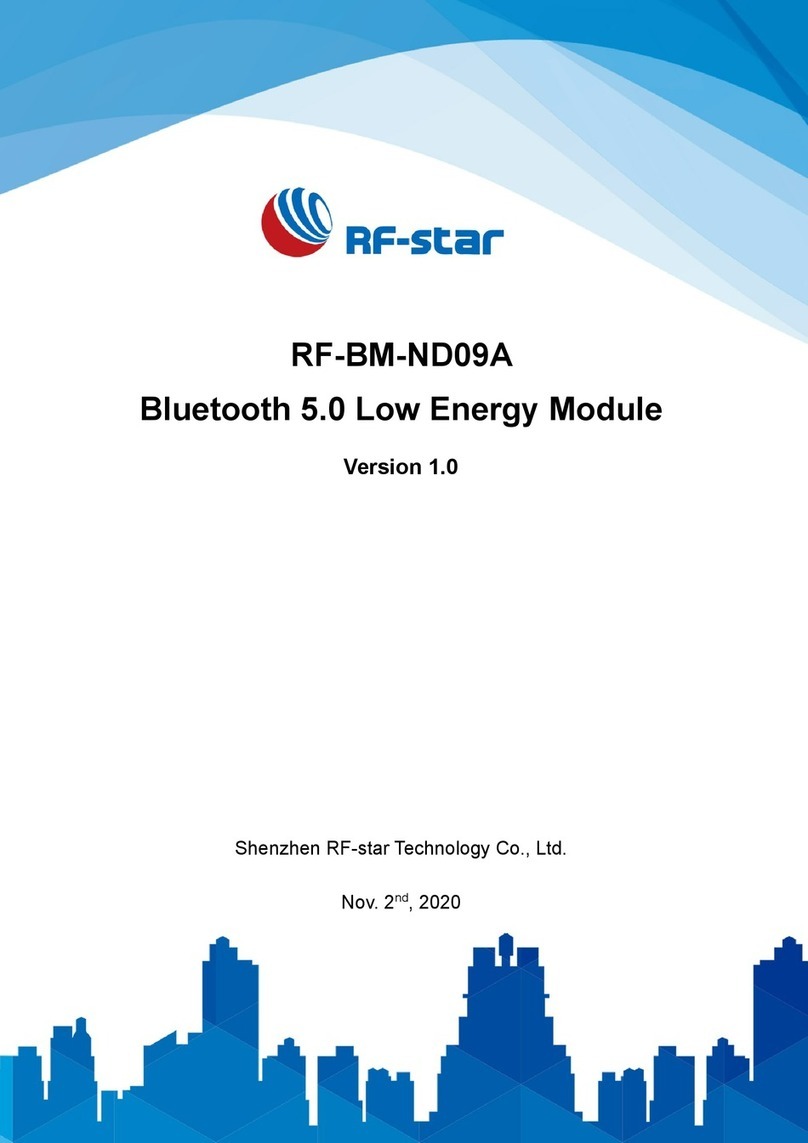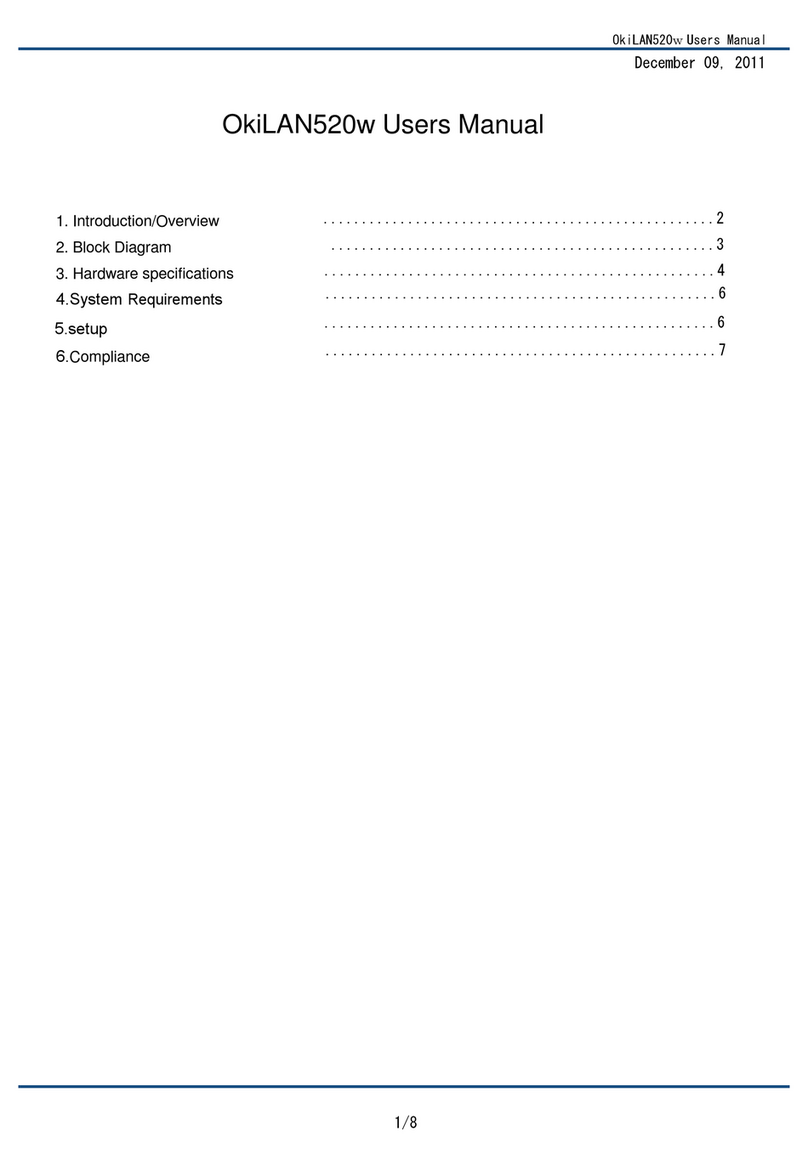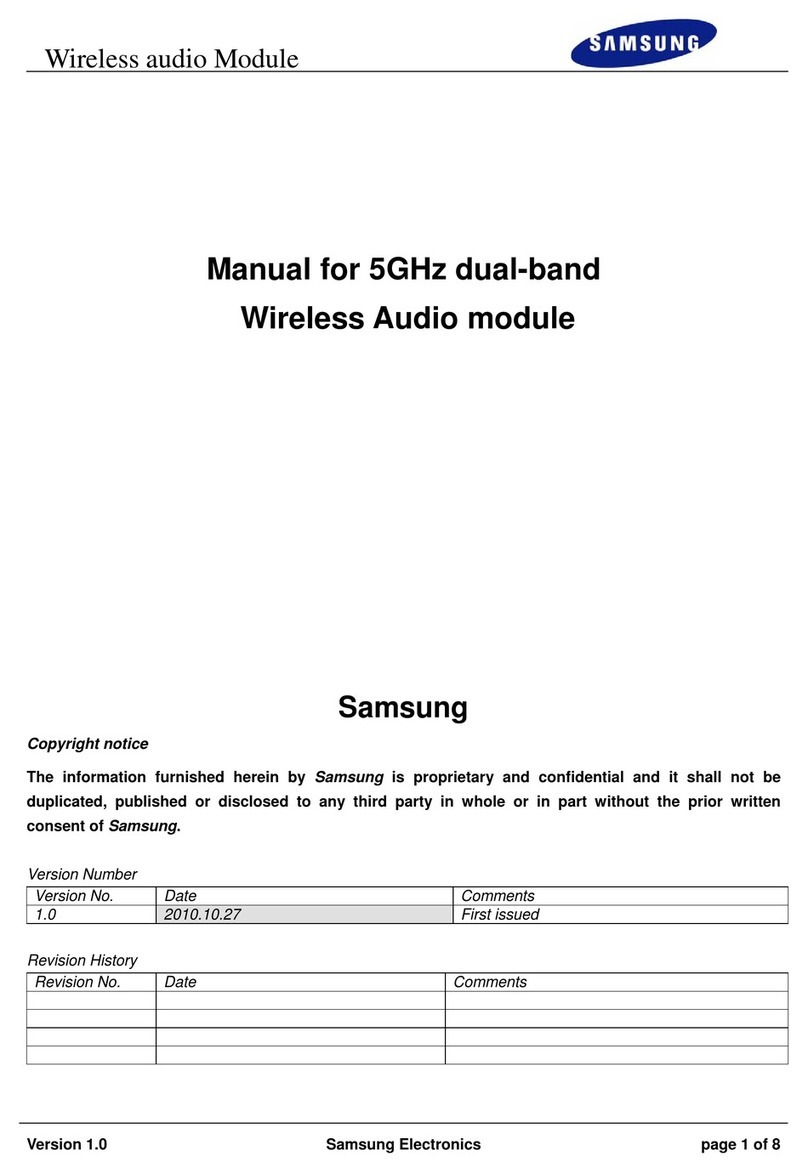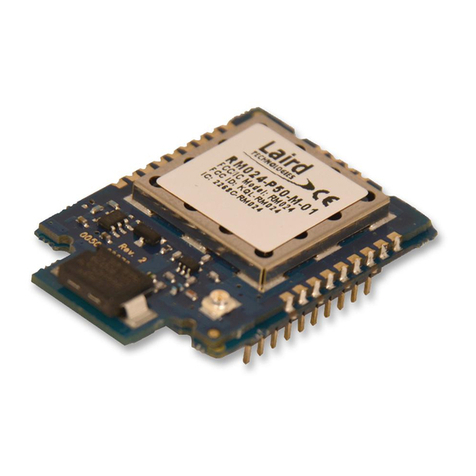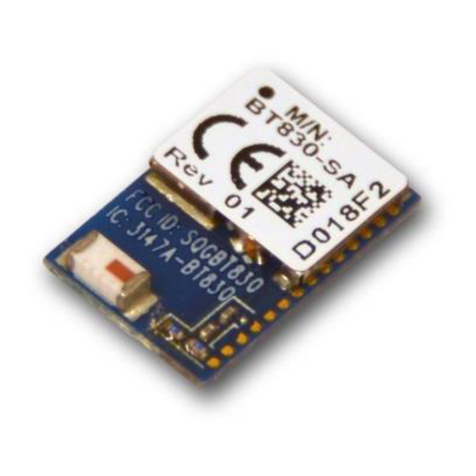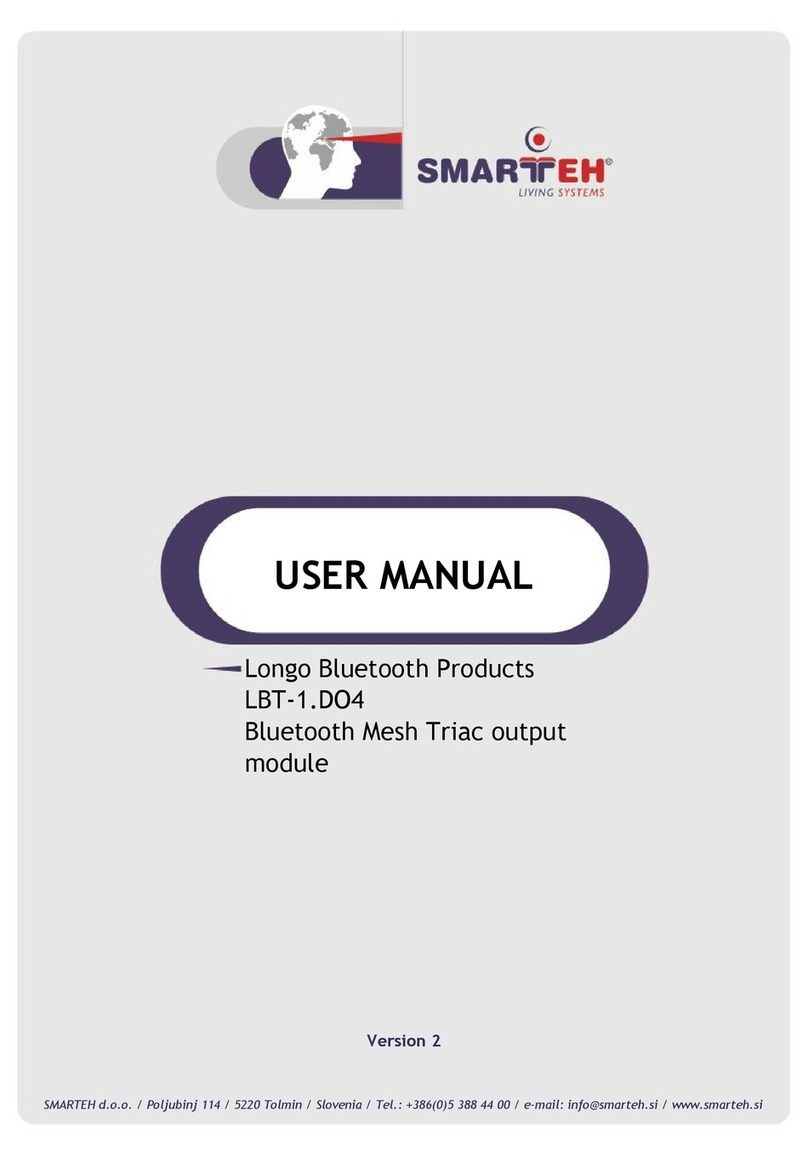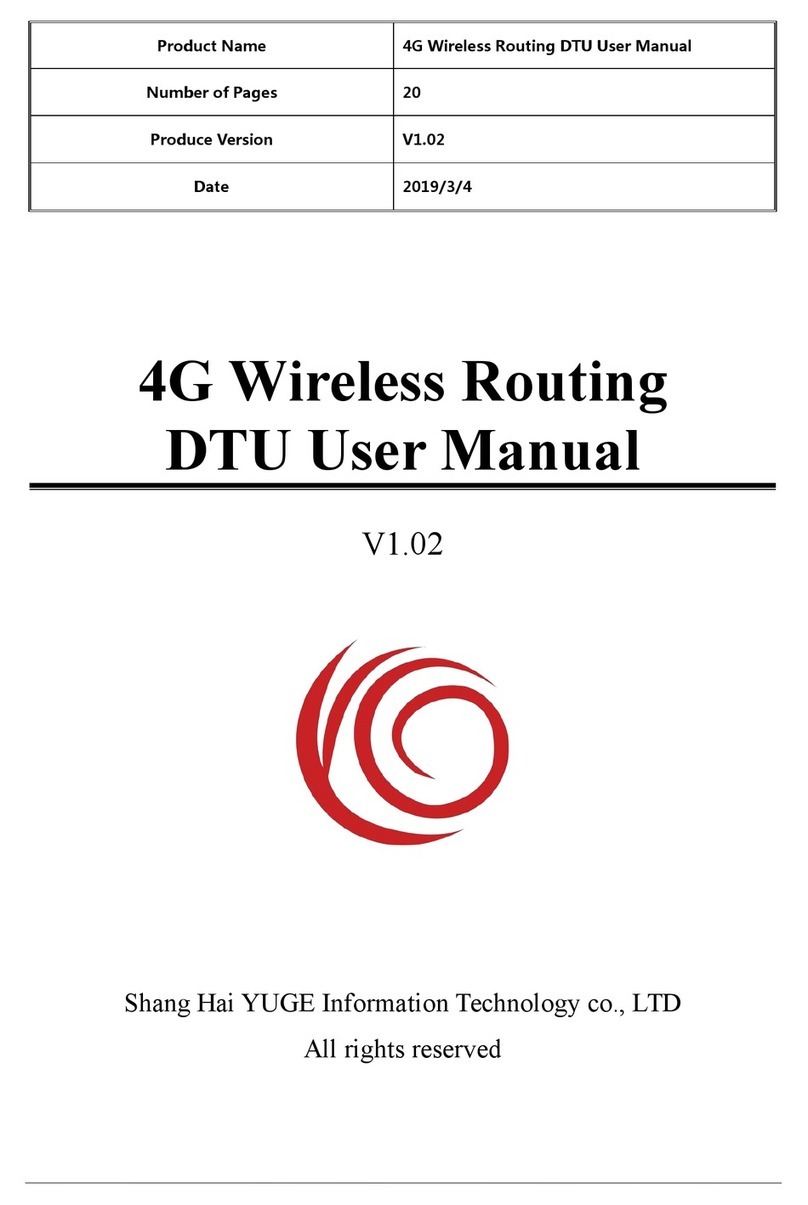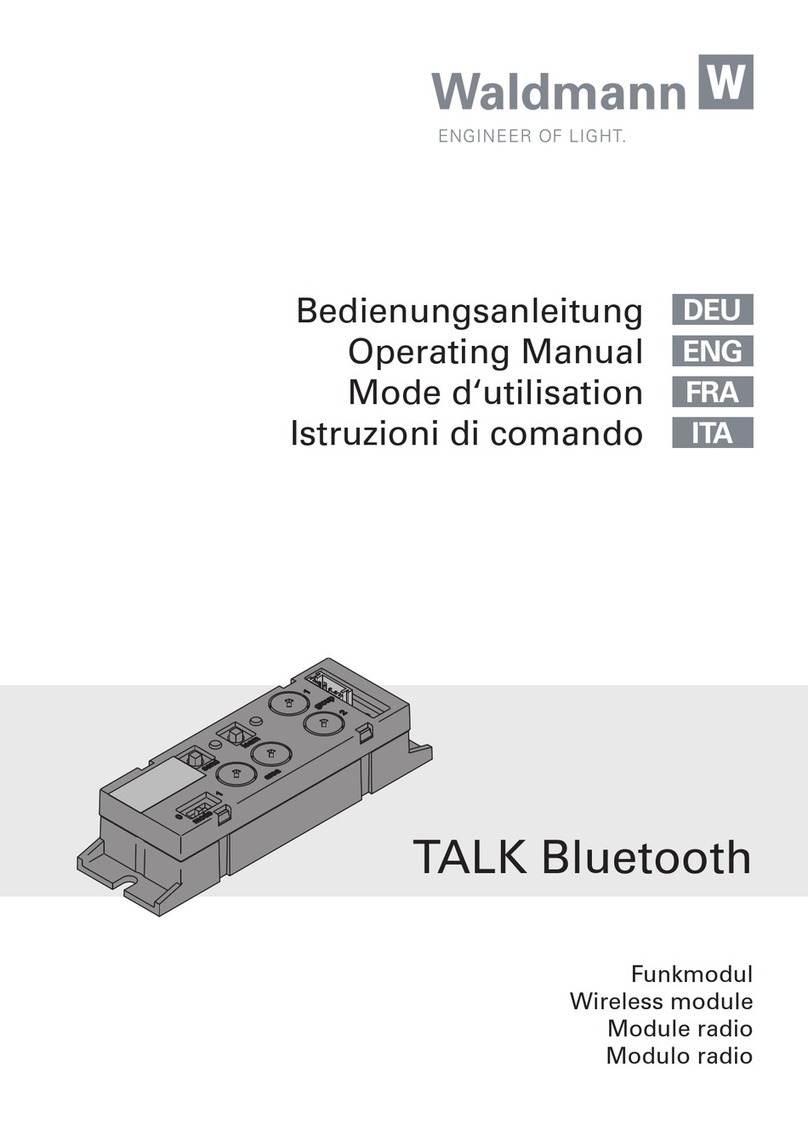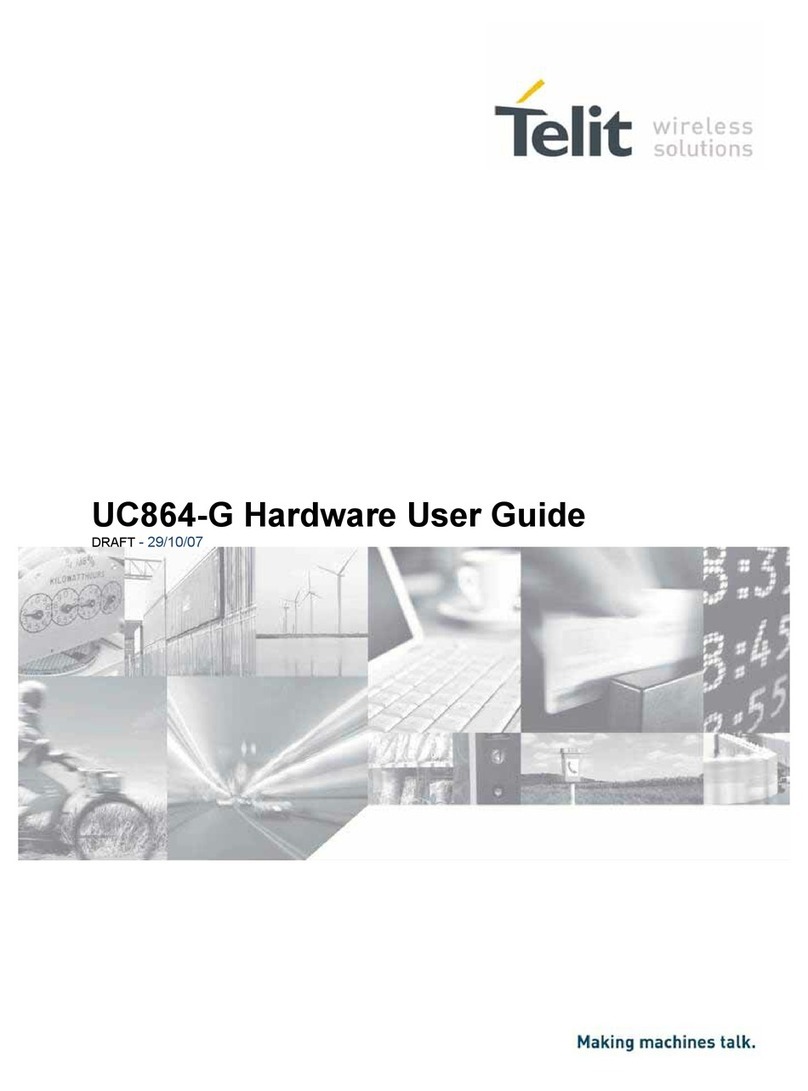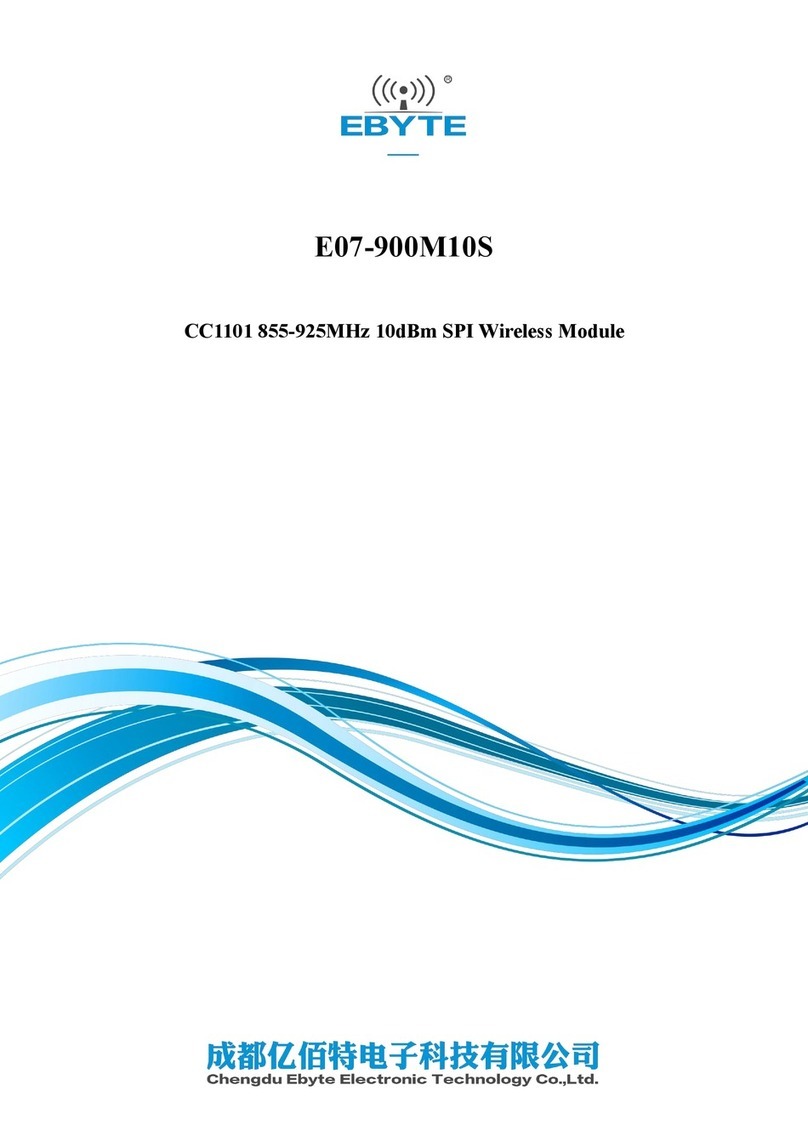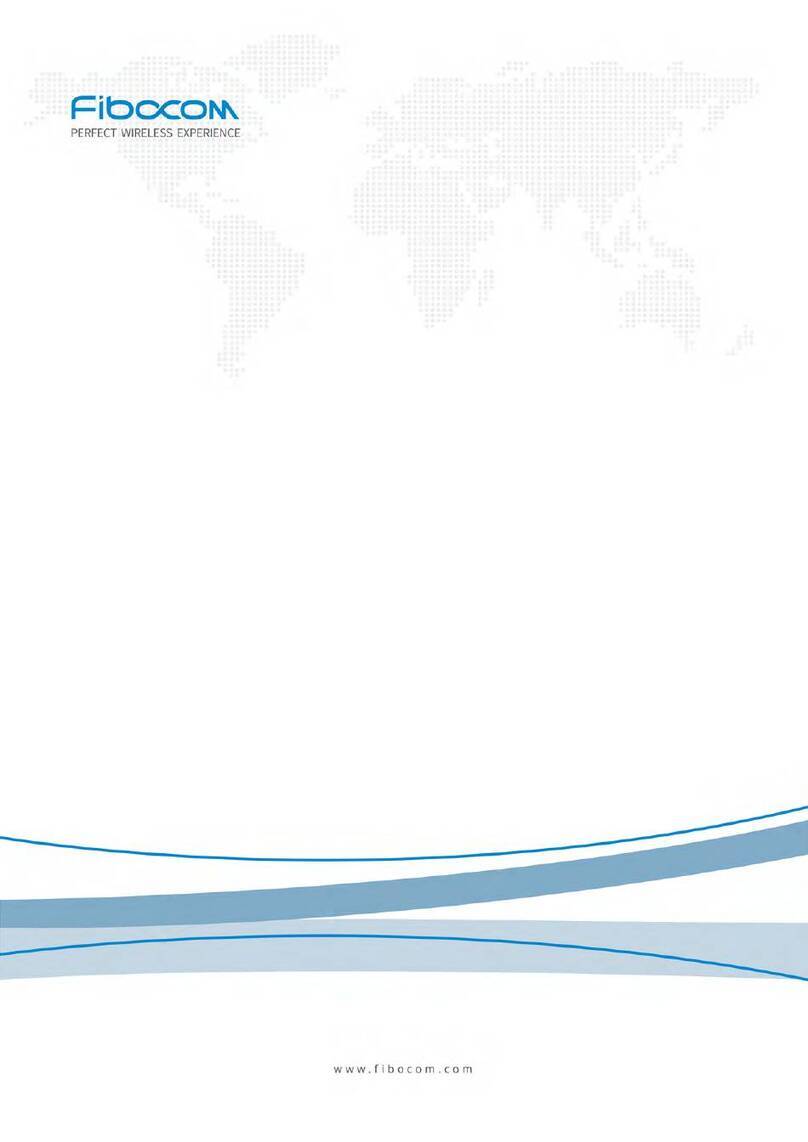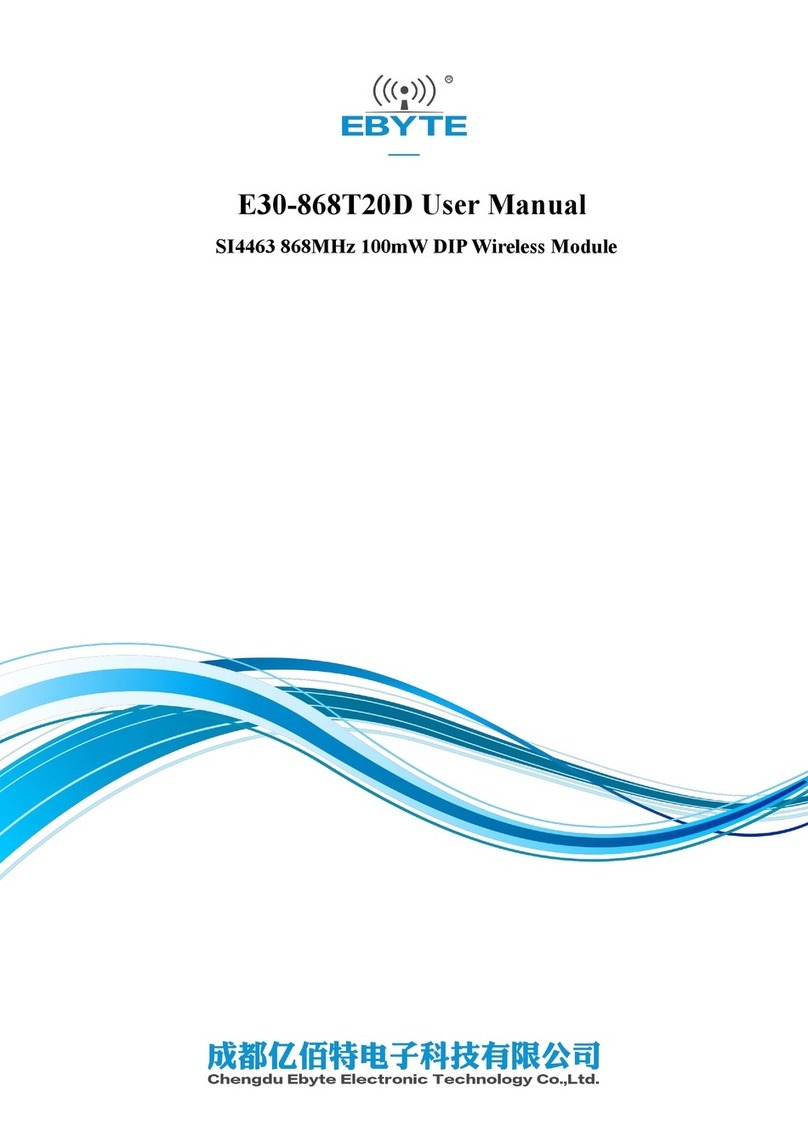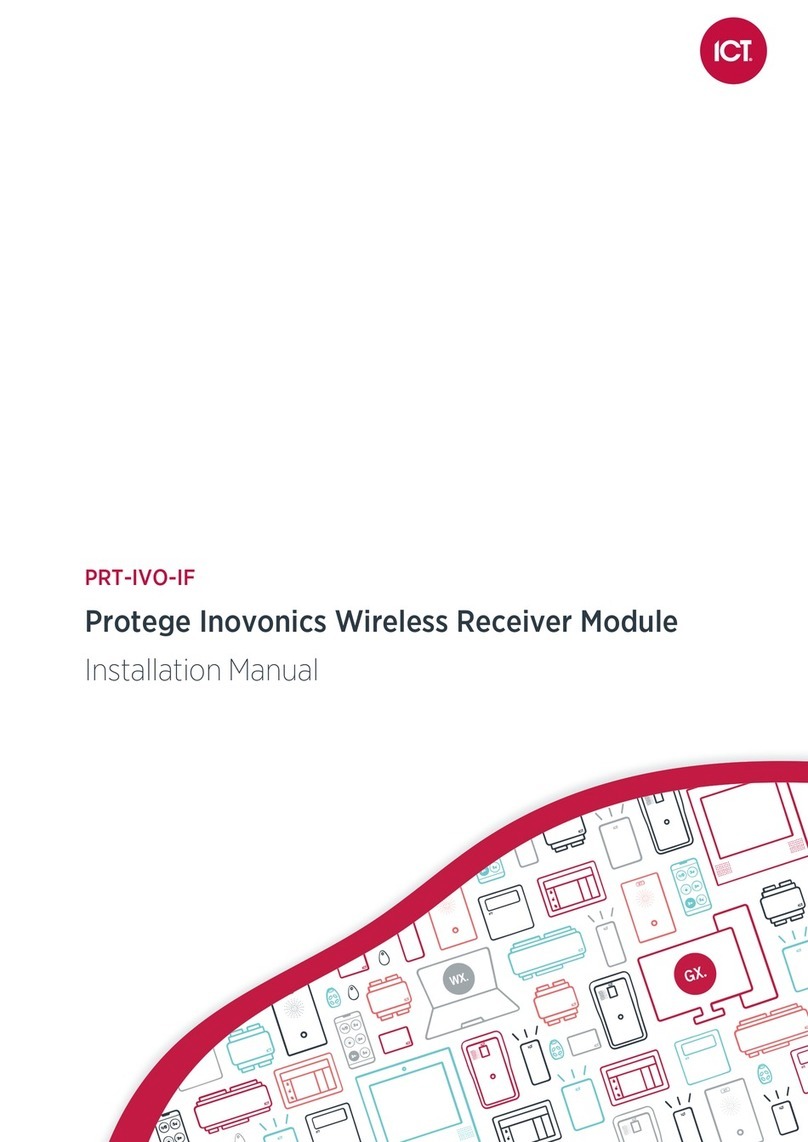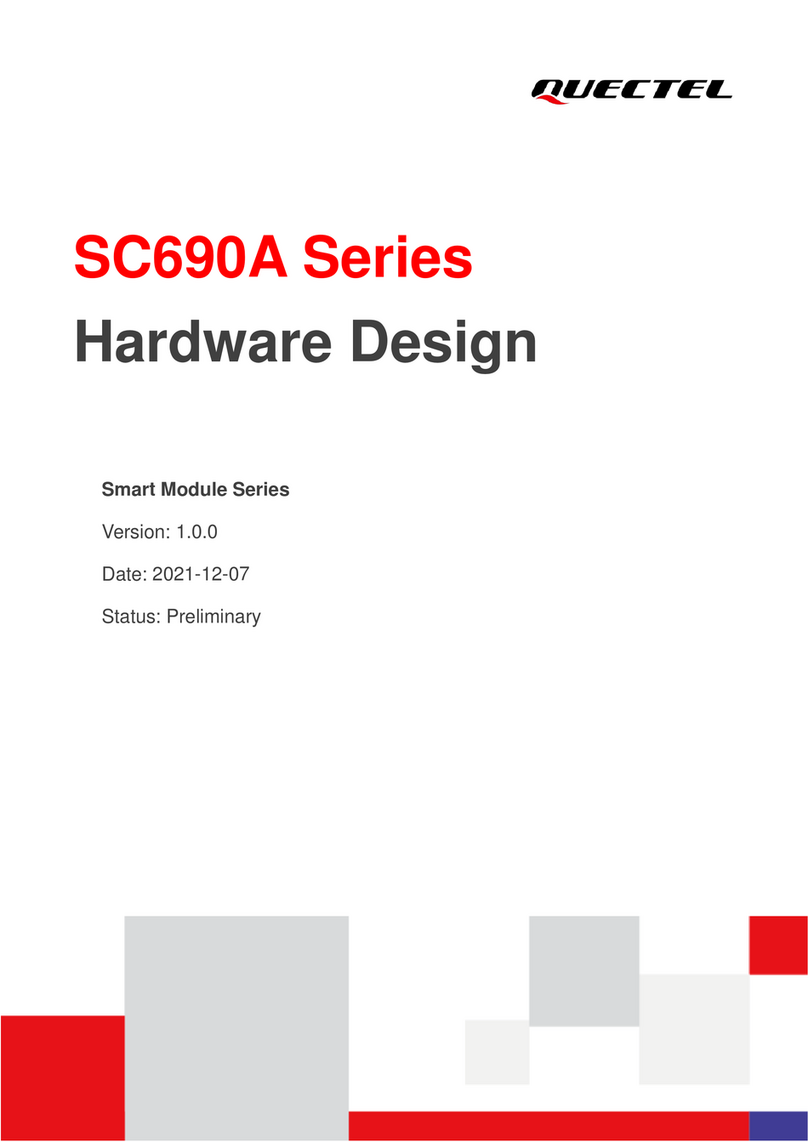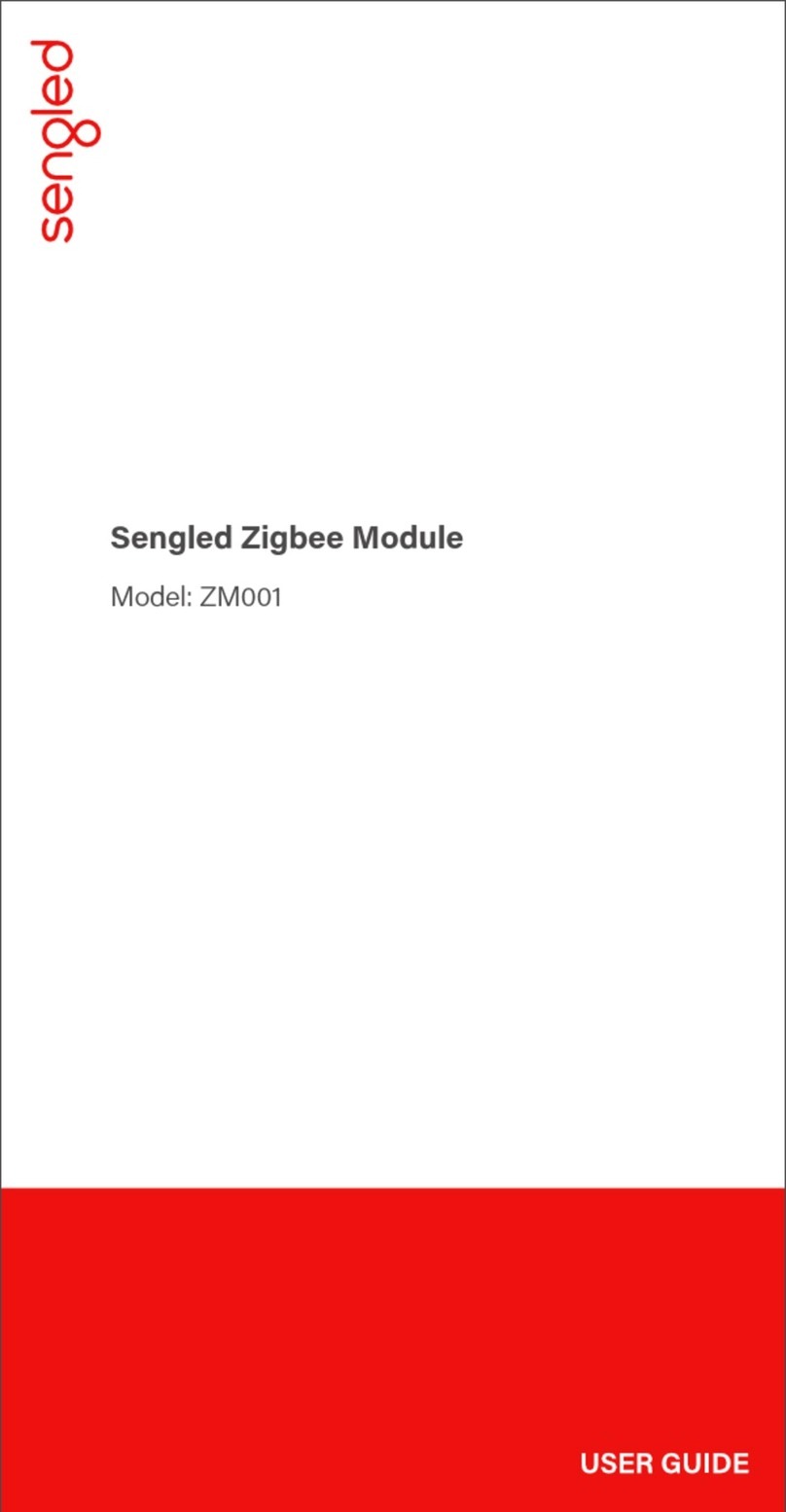RF-SM-1277B1/B2
www.szrfstar.com V1.1 - Oct, 2022
Shenzhen RF-star Technology Co., Ltd. Page 2 of 22
1 Device Overview
1.1 Description
RF-SM-1277B1 and RF-SM-1277B2 are RF modules based on TI CC1312R, which combines a flexible low-power radio
controller ARM® Cortex®-M0 and a powerful 48 MHz ARM® Cortex®-M4F microcontroller supporting multiple physical
layers and RF standards including IEEE 802.15.4g, IPv6-enabled smart objects (6LoWPAN), MIOTY®, Wi-SUN®,
proprietary systems, and the TI 15.4-Stack (Sub-1 GHz). RF-SM-1277B1/B2 integrates a 48.0 MHz crystal, a 32.768
kHz crystal, a balun, a band pass filter, an antenna matching and an option for RF output mode (IPEX antenna connector
and a half-hole interface), which makes the module low cost, low power consumption and long wireless communication
in Sub-1 GHz, also makes it an advanced available in sensing in building security systems, HVAC, smart meters, medical,
wired networking, portable electronics, home theater & entertainment, and connected peripherals markets. For the
working frequency, RF-SM-1277B1 supports 433 MHz and 470 MHz; RF-SM-1277B2 supports 868 MHz and 915 MHz.
1.2 Key Features
•RF Features
- IEEE 802.15.4g
- IPv6-enabled smart objects (6LoWPAN)
- MIOTY®
- Wi-SUN®
- Wireless M-Bus
- KNX RF
- Amazon Sidewalk
- Proprietary systems, including the TI 15.4-Stack
(Sub-1 GHz)
•TX power: up to +14 dBm
•Sensitivity
- Excellent receiver sensitivity: –124 dBm @ long-
range mode, –110 dBm @ 50 kbps
- Excellent selectivity (±100 kHz): 56 dB
- Excellent blocking performance (±10 MHz): 90 dB
•Microcontroller
- Powerful 48 MHz ARM® Cortex®-M4F processor
- EEMBC CoreMark® Score: 142
- EEMBC ULPBench™ score: 158
•Memory
- 352 KB of in-system programmable flash
- 256 KB of ROM for protocols and library
- 8 KB of SRAM for Cache (or as general-purpose
RAM)
- 20 KB of ultra-low-leakage SRAM
•Wide Operation Range
- Power supply: 2.2 V to 3.8 V
- Operating temperature: -40 °C to +85 °C
- Storage temperature: -40 °C to +125 °C
•On-Chip Internal DC/DC Converter
•Ultra-Low-Power Sensor Controller
•Wide Operation Range
- 2-pin cJTAG and JTAG debugging
- Supports over-the-air (OTA) update
- Can run autonomously from the rest of the System
- 16-bit architecture
- 2 KB of ultra-low-leakage SRAM for code and data
•Peripherals
- All digital peripheral pins can be routed to any
GPIO
- Four general-purpose timer modules (eight 16-bit
or four 32-bit timers, PWM each)
- 12-bit ADC, 200 ksamples/s, 8-channel analog
MUX
- Continuous time comparator
